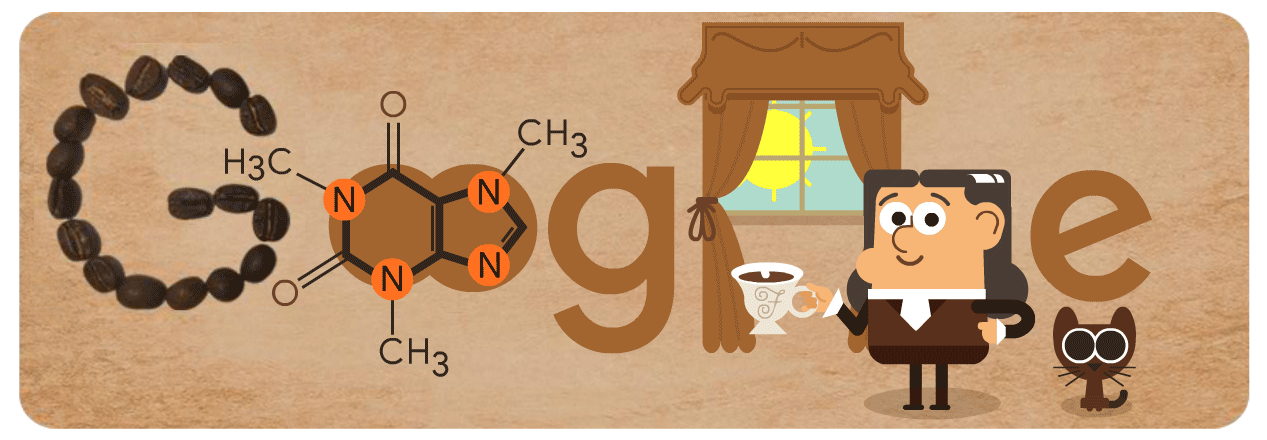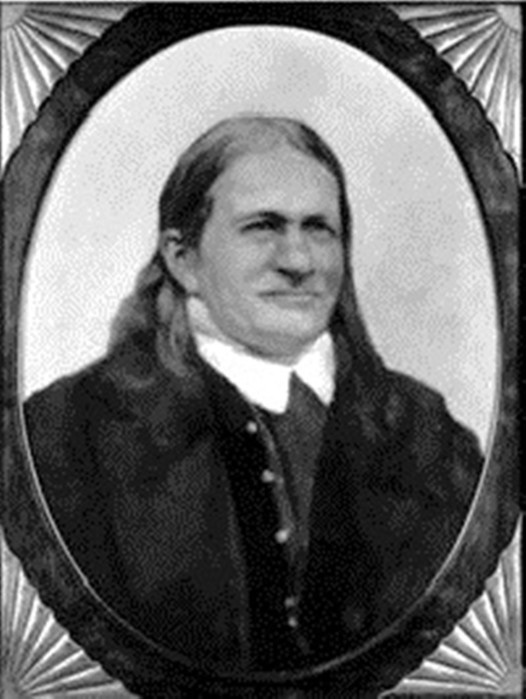Google 8/2 honors Friedlieb Ferdinand Runge: He studied with great merits but endured his life
Today February 8, Google Doodle designed Friedlieb Ferdinand Runge's image to celebrate 225 years of his birth. So who is Friedlieb Ferdinand Runge?

Google Doodle on February 8 honors the work of the scientist Friedlieb Ferdinand Runge.Source: Google.
Friedlieb Ferdinand Runge - The first scientist in the world to successfully break down caffeine
The world knows Friedlieb Ferdinand Runge thanks to the successful separation of the world's first caffeine in 1819.
On October 3, 1981, Friedlieb Ferdinand Runge's close friend Johann Wolfgang von Goethe (1749-1832), a famous German poet who was dubbed the "great man of world literature" , gave Give scientists a packet of coffee beans. At that time, this was an extremely valuable item.
Following Von Goethe's wishes after seeing his friend Friedlieb Ferdinand Runge successfully extract "poison" to dilate pupils from Atropa belladonna, the German scientist continues to research the composition. chemistry of coffee beans.
A few months later, Friedlieb Ferdinand Runge fully determined the composition of the beans, thus successfully separating the caffeine ingredient for the first time in 1819.
The scholar had the last days of his life

Portrait of German scientist Friedlieb Ferdinand Runge (February 8, 1794 - March 25, 1867).
German analytical chemist Friedlieb Ferdinand Runge was born on February 8, 1794 in Hamburg, Germany.
After taking his doctorate and acting as a professor at Breslau University in 1831, Runge continued to experiment - then wrote two books in which he described the use of techniques to separate chemical components.
After leaving the university, Runge moved to work at a chemical factory in Oranienburg. Here he studied synthetic dyes.
In addition to becoming a pioneer in how to dye new clothes, Runge also identifies and names the ingredients of dyes, including carbolic acid, now known as phenols; and discovered how to extract sugar from sugar beet juice.
After years of hard work, he was suddenly fired by his manager while angry. This greatly influenced the life of the multi-talented scientist later. After 15 years of living in poverty, Friedlieb Ferdinand Runge died at the age of 73.
On March 25, 1867, the world lost a scientist who successfully extracted the first caffeine, made the first coal tar, chromatography (one of the analytical techniques commonly used in laboratories. of analytical chemistry used to separate substances in a mixture .
So far, after more than 200 years, Google has designed images to commemorate and honor the great merit of the German scientist thanks to his contributions in the field of chemistry.
Something about caffeine
Caffeine has the chemical formula C8H10N4O2. This is a substance found in coffee beans, later found in tea, kola nuts, guarana and cocoa beans.

Artwork cup of coffee.Source: Internet.
According to the scientists' analysis, caffeine affects the human body in many different ways.
First, with a sufficient amount of caffeine, it stimulates the central nervous system; create excitement, reduce sleepiness; works to relieve pain, reduce fatigue during physical training .
Secondly, when using caffeine continuously, it will turn into inhibitory stage, causing heart palpitations; stimulating the respiratory center to cause bronchiectasis; affect bone and joint health; affect the stomach; and increase blood sugar .
- Google honors Ignacio Anaya García - 'Father' of Mexican nachos makes diners fall in love
- Hoi An charm appears on Google Doodle July 16: What is the reason Google honors?
- Google honors Hedwig Kohn: Physicist 'smashes' Nazi chains
- Who is Molière who Google Doodle honored?
- What is special about pretzel in Europe and America?
- Google Knol lags far behind Wikipedia
- The mystery of the
- Google honors Olga Ladyzhenskaya: Mathematicians overcome 'fate's pain' when they were young
- Who is Cesária Évora who was honored by Google Doodle today?
- Special Google products and services
- Who is Amrita Pritam and is Google Doodle celebrating its 100th birthday?
- The ancient wall honors Alexander the Great
 The Indian prophet prodigy warned 3 events and what will happen on April 13, 2022
The Indian prophet prodigy warned 3 events and what will happen on April 13, 2022 Top 8 youngest professors in the world: Teaching university at the age of 18
Top 8 youngest professors in the world: Teaching university at the age of 18 Elena Cornaro Piscopia - The world's first female doctor of philosophy
Elena Cornaro Piscopia - The world's first female doctor of philosophy The ancient Greek philosopher was executed for understanding the Moon
The ancient Greek philosopher was executed for understanding the Moon